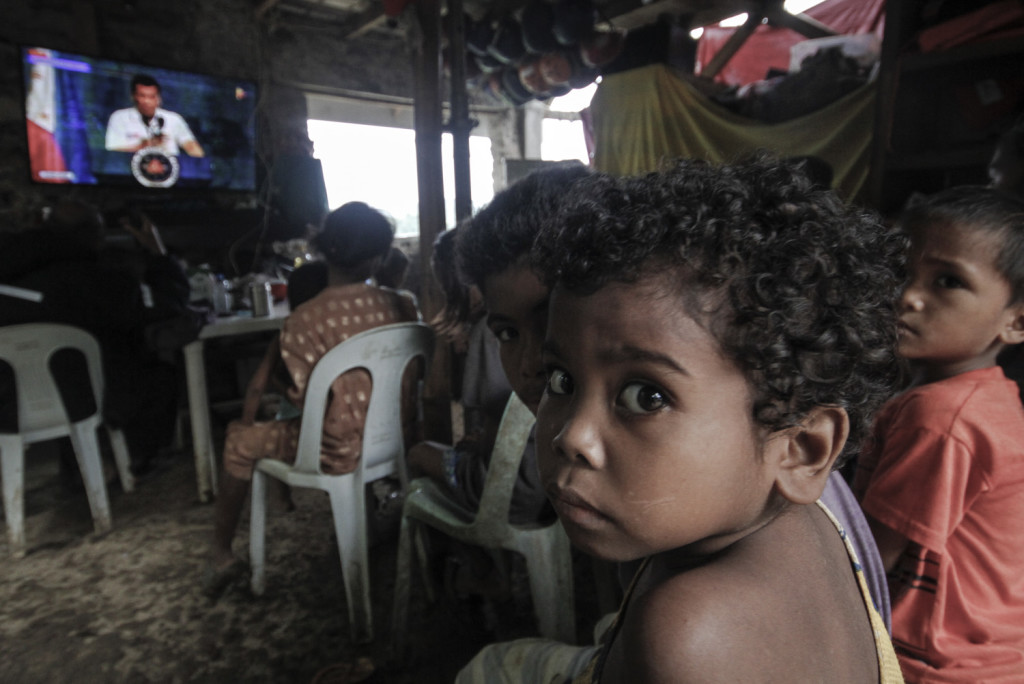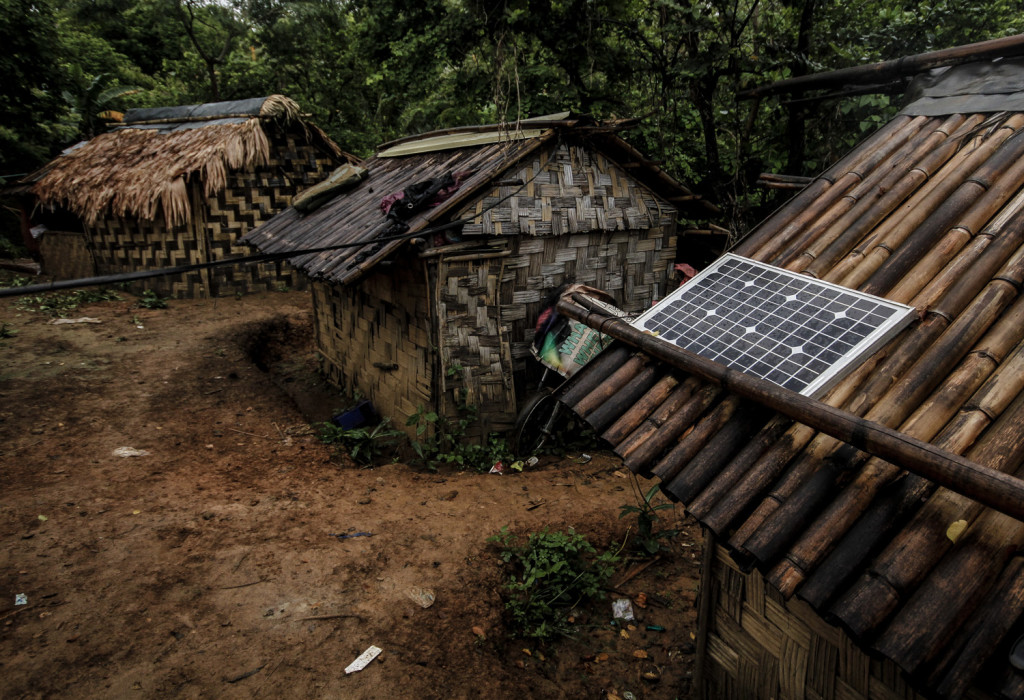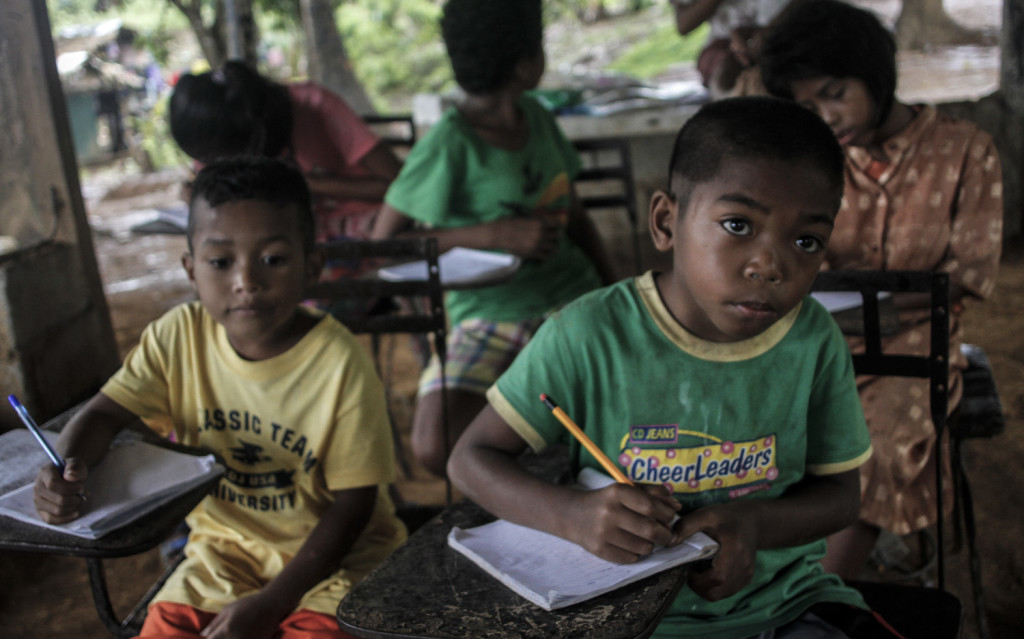Text and photos by Alanah Torralba
Oct 24, 2018 Thomson Reuters Foundation
NORZAGARAY, Philippines — In battling the timber poachers who roam the thick Sierra Madre forests near his home, Larry Garaes has found a new ally: solar panels.
With solar chargers, the radios he and other forest rangers rely on no longer run out of power on multi-day operations in the mountains, he said.
“Communication between rangers is a lot better. Now, we can catch the poachers while they are in the act because we can coordinate our moves quietly without resorting to shouting at the next ranger – unlike before,” he told the Thomson Reuters Foundation.
Access to clean energy is bringing a range of unexpected benefits around the world. On the longest mountain range in the Philippines, those benefits include better forest protection – and power for tribal people who once lacked it.
More than 2 million households – or about 10 percent of all households – in the Philippines lack electricity, according to a 2017 report by the country’s Department of Energy.
About three quarters are in remote rural locations, in a country spread over thousands of islands, according to the Small Power Utilities Group (SPUG), which is trying to get them connected.
Because bringing the national grid power to many of those people is not cost effective, the state National Power Corporation has charged SPUG with setting up and running small power plants in these areas.
So far 327 such plants have been established, according to the National Power Corporation.
Government plans call for 100 percent electrification of the country by 2022.
“Government has to do its work to connect all those areas that are not yet connected to the grid,” said Edmundo Veloso Jr., the head of the National Power Corporation’s SPUG unit.
But all but one of the new generation plants use diesel fuel, he said – even though transport of fuel can be a big problem in remote areas.
Diesel is “the fastest and the only technology available at the moment for off-grid areas. Diesel is still the cheapest in terms of capital outlay,” he said.
TAPPING THE SUN
In Garaes’ community, however, in Bulacan province in the northern Philippines, two solar micro-grids are providing the community’s first power.
They were put in place last December by the Forest Foundation Philippines, a non-governmental organisation that aims to improve forest protection, and the Centre for Renewable Energy and Sustainable Technology (CREST), a Quezon City-based organisation focused on expanding use of clean power.
While the new grid was primarily set up to help members of the local Dumagat ethnic group police the forests, it also supplies power free of charge to common areas of the village of 36 families, including a study hall and communal kitchens.
The forest rangers and other members of the community have been trained to troubleshoot and maintain the system, CREST officials said.
“In the past we would need to walk almost two kilometres to the nearest village where there is electricity to charge our radios and cellphones for a fee,” Garaes said. “That was a burden to us.”
Such solar micro-grids could fill gaps in providing electricity to many remote areas of the Philippines as they are cheap to operate – and don’t face the fuel transport issue of diesel-run plants, said Sara Ahmed, an energy analyst for the U.S.-based Institute for Energy Economics and Financial Analysis.
“It’s not economically viable to transfer power from one (place) to another if the demand is not high. That’s why far-flung areas don’t get power,” Ahmed said.
“This is where micro-grids come in. There is no need to build transmission lines and wires. You can have power right there and then. You save a lot of money.”
In Garaes’ village, each micro-grid produces 1 kilowatt of electricity – enough to provide lights in the communal kitchen, along village pathways, in the classroom and for a television set. Building the grid cost about $3,000, according to CREST officials.
Urbano Mendiola Jr., vice president for corporate affairs at the National Power Corporation, said his agency was considering installing hybrid power plants that combine diesel and solar power in some remote areas.
A hybrid plant to power about 1,250 households costs about $985,000, he said, while a diesel-only plant costs about $425,000.
But while hybrid plants are more expensive to set up at the moment, they bring cost savings in the long run because energy from the sun is free, he said.
He said the company is not setting up solar-only plants in remote areas at the moment because of the cost of the batteries needed to store solar power and provide energy at night.
Rural off-grid power plants in the Philippines are funded by the government and by a small surcharge on the electrical bills of grid power users, aimed at bringing the cost of power for rural users closer in line with that in urban areas.
Ahmed said that tapping the full potential of renewable energy would require a sea-change in the views of officials tasked with providing energy.
Currently they say diesel is the most affordable option. But “diesel is not affordable… When they say it’s cheaper, they only mean upfront,” she said.
“If you look at wind and solar, the prices have dramatically gone down,” Ahmed said. “SPUG needs to update itself with the technology”.
——–
This story was supported by the Internews’ Earth Journalism Network (EJN). It was originally published at Thomson Reuters Foundation. Visithttp://news.trust.org/item/
Latest posts by EnviroNewsph (see all)
- Global fund aimed at protecting nature and accelerate investment in conservation, launched in Canada - August 25, 2023
- Why ‘loss and damage’ is the most bitterly fought-over issue at COP27 climate talks? - November 18, 2022
- U.S. hands over P2.3M in equipment and wildALERT system to PH to protect wildlife - December 16, 2020




